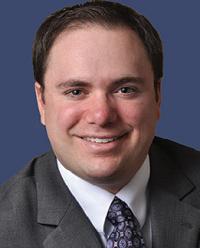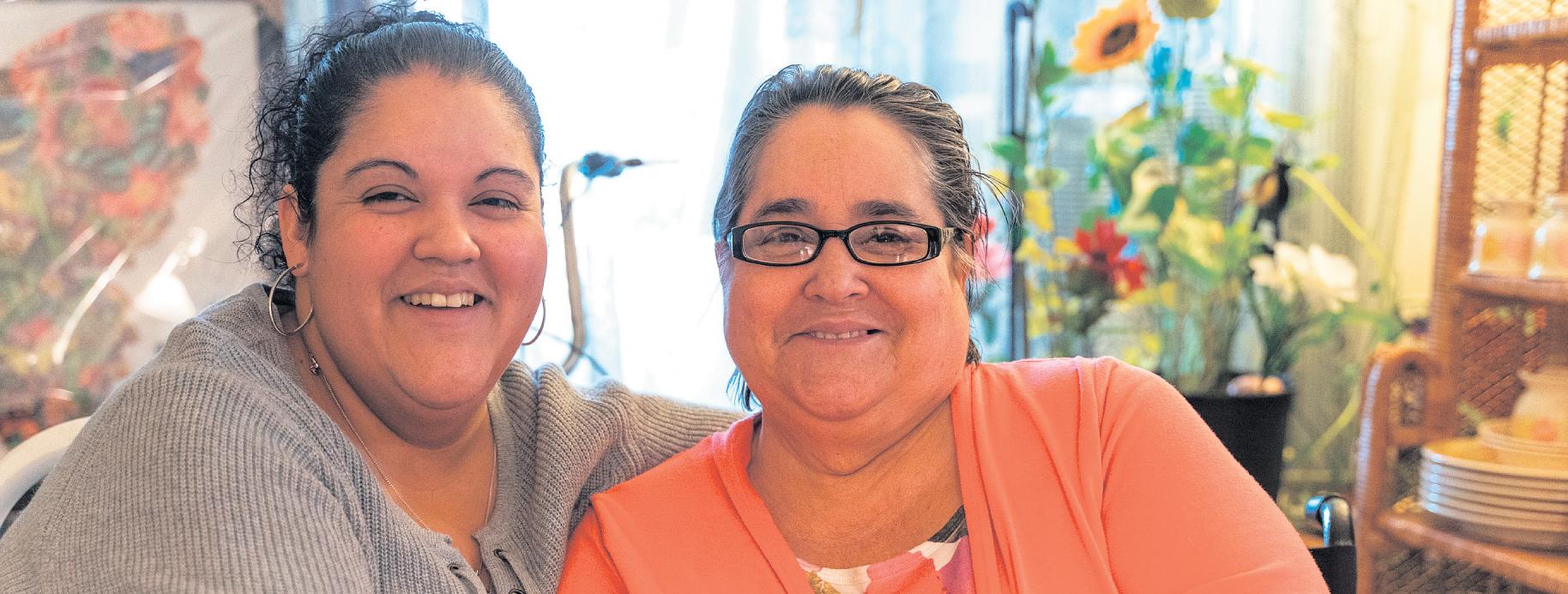
Saturday, March 16, 2024
A special advertising publication of
“Living at Kimball Farms gives me the freedom to spend my time doing the things I enjoy.”
Dave, Kimball Farms Life Care Resident








Saturday, March 16, 2024
A special advertising publication of
“Living at Kimball Farms gives me the freedom to spend my time doing the things I enjoy.”
Dave, Kimball Farms Life Care Resident






Millions of adults go to great lengths to protect their assets. Those measures run the gamut from simple everyday efforts like utilizing twofactor authentication when accessing financial accounts via online to more complicated undertakings like estate planning. Life insurance is a component of estate planning that is vital to anyone looking to protect their assets in the event of their death.
Life insurance is both similar to and different from other types of insurance. Like homeowners and auto insurance policies, life insurance provides financial protection in difficult circumstances. A life insurance policy is a contract between an insurance provider and a policy holder that guarantees a payout to beneficiaries designated by the insured individual in the wake of that individual’s death.
Insurance providers differ, but individuals interested in life insurance can expect to be asked about their medical histories and lifestyle habits when discussing policies. Prospective policy holders will often be asked to sign waivers that allow providers to access their medical records. This is necessary so companies can get an idea of the health of the person applying for life insurance, which will determine the cost of a policy. That information, as well as family history, is important because it can serve as an indicator of future health risks. Some variables, including lifestyle habits like smoking, won’t necessarily appear on an individual’s medical history. In an effort to address that, insurance providers typically ask prospective policy holders to answer a variety of questions about their lifestyle, including whether or not they smoke and how much alcohol they

consume. It’s vital that individuals answer these questions honestly, as companies can deny payouts to beneficiaries if they determine policy holders misled them during the application process.
Coverage needs vary depending on the individual. Life insurance is intended to provide for loved ones in the aftermath of a policy holder’s death. How much money will those individuals need to pay their bills? Young adults who are just starting their families may want more coverage than aging adults who have already paid off their homes and saved a considerable amount for retirement. The National Association of Insurance Commissioners recommends that individuals ask themselves how much
of the family income they provide and if anyone else, such as an aging parent, depends on them for financial support. Answering these questions can help individuals determine how much coverage they need.
Insurance providers offer various types of life insurance policies. Term life policies are among the most popular because they tend to be affordable while offering substantial coverage. There are different types of term life policies, but policies tend to run for anywhere from 10 to 30 years and expire around the time individuals reach retirement age. That’s because many people save enough for retirement and don’t have the sizable expenses, such as a mortgage, to account for at this point in their lives.
That means loved ones won’t necessarily need to be provided for in the wake of a policy holder’s death.
Permanent life insurance policies last until the policy holder’s death so long as he or she continues to pay the premiums on time. Financial advisors can help individuals understand the ins and outs of the various types of permanent life insurance policies, which differ from term life policies because they can serve as investment vehicles and sources of loans in certain instances.
Life insurance is a vital component of asset protection that can offer peace of mind to policy holders who want to ensure their loved ones are provided for in the wake of their death.

Join over 1,5 0 of the most creative, engaged, and active adults in the Berkshires for courses, events, and community
erkshireolli.or

The death of a loved is difficult to confront. Emotions are elevated and grief is prominent, which can make it hard to make important decisions. Quite often several people need to come together to make decisions necessary for a family member’s funeral arrangements. There also is a financial component to consider.
According to Lincoln Heritage Life Insurance Company, the average funeral costs between $7,000 and $12,000, which may or may not include viewing, burial, transport, casket and other fees. Surviving family members responsible for planning a funeral may be asked to contribute a portion of these expenses if other arrangements have not already been made, which can exacerbate stressful feelings during an already difficult time.
Funeral pre-planning is a good way for individuals to make a difficult time a little more manageable for their survivors. Funeral homes frequently work hand-in-hand with individuals and families to customize pre-planning packages and facilitate the process. Here’s a rundown of pre-planning as individuals consider their options.
Pre-planning a funeral enables peo-
ple to consider all of the options without the time constraints of making funeral arrangements directly after the passing of a loved one. A knowledgeable staff member at a funeral home, can explain the offerings and answer any questions.
Unless an individual has planned a funeral in the past, there could be a lot of unknowns. Funeral homes handle these events every day and can guide families through the intricacies of the process with ease. Most have pre-planning kits that include all of the essentials of the process, such as choosing caskets, deciding on prayer cards and designing floral arrangements.
Working directly with a professional also helps alleviate the burden on family members, who may not agree on arrangements or concur on what they believe would be a loved one’s final wishes. When pre-planning a funeral, individuals can spell out in their own words exactly what they desire and even finance the funeral in advance.
A funeral home staff member can



go over the various ways to fund funeral expenses, and may work out a payment schedule to spread out the expense over a period of time. He or she also may explain how funeral prearrangement can be a way to “spend down” assets in a way that protects those monies from look-back periods when determining eligibility for certain assisted living or nursing facilities should that be required in the future.
Very often a funeral home is a conduit that facilitates all facets of the funeral process. They may reach out to a preferred house of worship to organize a mass or other religious service and will also contact the cemetery and work with them to secure a plot and deed. This also alleviates pressure down the line on grieving family members who need time to mourn.




Retirement is a milestone that is often the byproduct of decades of hard work. Though a growing number of working professionals have no intention of ever retiring, the vast majority of adults look forward to the day when they can call it a career.
The prospect of early retirement is enticing to millions of people. Though retiring early may seem like a no brainer for individuals in position to do so, a careful consideration of the pros and cons of early retirement can ensure people make the best decision.
For many people, early retirement is less about finding a beach to relax on and more about pivoting to a second career. In fact, a recent report from the Employee Benefit Research Institute indicated that 74 percent of workers plan to get a new job after they retire. In such instances, early retirement is often about turning a long-time passion into a second career. That can help adults achieve a lifelong dream, making it one of the better reasons to retire early.
Another advantage to retiring early is the chance to spend more quality time with family. One study from the American Psychological Association
found that more than half of working professionals now check work emails after work hours, including on weekends. Forty-four percent even check their email while on vacation. Early retirement enables individuals to escape that round-the-clock career commitment, affording retirees a chance to spend more unfiltered quality time with the people they love most.
Retiring early also provides an opportunity to escape a daily grind that many people have indicated has become increasingly burdensome in recent years. The 2021 Work and WellBeing Survey from the American Psychological Association found that 79 percent of the roughly 1,500 adults surveyed had experienced work-related stress in the month prior to participating. Work is a leading cause of stress for many people, and stress has been linked to a host of health problems. Individuals who can retire early can benefit from less stress in their lives.
Retiring early can seem like a dream, but it could turn into a nightmare for people whose finances aren’t as robust as they need to be to support a lengthy retirement. One report from the Boston College Center for Retirement Re-

search found that around 50 percent of working families face a significant decline in their standard of living during retirement. Life expectancy has been on the rise in developed countries since 1900, so retiring too early carries a financial risk for people who have saved but not necessarily saved enough.
Retiring early also could make people more vulnerable to cognitive decline than they would be if they keep working. One study from researchers
at Scotland’s University of St. Andrews found that people who wait until age 67 to retire experience less cognitive decline than people who retire prior to 67. Out-of-pocket medical costs are another disadvantage to retiring early. Employer-sponsored medical insurance tends to cost individuals less than private plans, which is a significant consideration for individuals at a point in their lives when they may need to visit doctors more often.




























































Individuals plan for many different scenarios: buying a home, putting kids through college and saving for retirement. Quite often the concept of making arrangements for one’s golden years is placed on the back burner. However, that can be an expensive mistake.
According to AARP, by the time a person reaches age 65, he or she has a 50-50 chance of needing longterm care at some point in the future. Medicare, the federal health insurance program for people who are 65 or older in the United States, does not cover custodial care, which is the primary form of care in nursing homes. Therefore, many people must find alternative ways to finance nursing home and other long-term care options. Those who must pay out-of-pocket spend an average of $85,000 per year on a nursing home in the U.S., and this is often an expense that has not been included in retirement budgets.
Long-term care insurance can be the best option to offset the high costs of nursing home and other care in most instances. It helps cover the costs of services that aren’t
covered by regular health insurance, namely assistance with routine daily activities like bathing, dressing or getting in and out of bed, advises the financial resource NerdWallet. Such care may be administered at home by a private health aide or in a skilled nursing facility. Most policies also will reimburse for services rendered in an assisted living facility or an adult day care center.
According to a study revised in 2016 by the Urban Institute and the U.S. Department of Health & Human Services, about 14 percent of people age 65 and older will require care for more than five years. Getting the facts about long-term care insurance can help individuals make important decisions for their futures.
• The earlier a person buys a longterm care insurance policy the lower the rates tend to be. The American Association of Long-Term Care Insurance says a 65-year-old couple can typically buy a policy for $4,800 per year to offer base benefits of $180,000 plus 3 percent inflation growth. That plan price more than

doubles if purchased at age 75.
• Cost also is based on the maximum amount the policy will pay per day and the number of years the policy will pay. Many policies limit how long or how much they will pay, some between two and five years, states the Administration on Aging.
• Long-term care policies require some medical underwriting, so not everyone will qualify.
AARP suggests seeking out an independent agent who sells policies from multiple companies rather than a single insurer.

Earnings go a long way toward determining an individual’s financial security. However, high wages do not guarantee long-term financial security any more than lower wages ensure a future marked by a lack of financial flexibility. Individuals are a unique variable in any financial equation, and those who can exercise and maintain some fiscal discipline are more likely to secure long-term security than those who cannot.
One way anyone can improve their chances at a secure and flexible financial future is to identify and avoid some common mistakes. Avoiding the following mistakes can increase the chances individuals at various income levels enjoy a secure financial future.
• Delay saving for retirement: Conventional wisdom says it’s never too early to begin saving for retirement. Despite that, surveys indicate many adults are behind on saving. A 2022 survey from Bankrate found that 55 percent of respondents indicated they were behind on their retirement savings, while 35 percent reported being “significantly behind.” Though laws governing retirement contributions have made it easier for people to catch up, it’s still better to begin saving once you enter the professional arena, which for most people is some time in their early to mid-twenties. The longer you delay saving for retirement, the more precarious your financial future becomes.
• Spending beyond your means: The post-pandemic increase in costof-living has garnered considerable attention in recent years, when inflation has driven up the cost of just about everything. There’s little consumers can do about the rising cost

of living, but making a concerted effort to curtail spending is one way to combat the spike. However, surveys indicate many people earning significant salaries are living paycheckto-paycheck. For example, a 2021 report from LendingClub Corporation found that nearly 40 percent of individuals with annual incomes greater than $100,000 live paycheck to paycheck, with 12 percent reporting they are struggling to pay their bills. An assortment of variables undoubtedly contribute to that stark reality, and one might be a tendency for consumers to spend beyond their means. Individuals who are struggling to curtail their spending are urged to seek the help of a certified financial planner who can help them devise a budget and alleviate some of the stress and pressure associated with overspending or living paycheck to paycheck.

890
Nor
• Poor use of credit: Credit cards can be a financial safety blanket, but that blanket can soon smother consumers who don’t know how and when to utilize credit. Reserve credit cards for emergency situations and resist the temptation to use them for daily expenses, such as groceries and gas. Credit card interest rates tend to be in the double digits, so unless card holders can pay their balances in full each month, they’re only exacerbating the already high cost of living by using credit for daily expenses.
• Buying too much house: Overspending on housing is another financial mistake, and arguably the one that’s the most difficult to avoid. It can be hard to walk away from a dream home, but such a decision could secure your financial future. Unfortunately, data indicates far too many individuals are spending
more on housing than conventional financial wisdom recommends. The most recent Consumer Expenditure Survey from the U.S. Bureau of Labor Statistics found that spending on housing accounted for 33 percent of the average household’s monthly expenses and that the average household spent 88 percent of its after-tax income each month. That latter figure is especially troubling, as conventional financial wisdom recommends a saving rate of 20 percent. Overspending on housing greatly affects a person’s ability to save and invest, so resisting the temptation to buy that expensive dream home could be the difference between a secure or scary financial future.
Avoiding some common mistakes can help individuals be more financially flexible and secure over the long haul.



D T O C O M P E N S A T I O N

M I C H A E L S H E P A R D

A R T N E R E R I K A O ’
C o m p a s s i o n a t e
M a s s a c h u s e t t s
L a w y e r s





Our community is a destination for those seeking a fulfilling and worry-free lifestyle. At Sweetwood, seniors living independently discover a range of amenities designed to enrich their everyday experiences Our commitment extends beyond just offering a place to live we provide an unwavering dedication to well-being.
Our top priority is to cultivate a sense of belonging and ensure that each day is sweeter than the last.
Our all-inclusive living experience means that you can focus on enjoying life to the fullest, without the stress of homeownership. With a variety of apartment sizes to choose from, with rental and buy-in options, each resident enjoys a comfortable and personalized living arrangement
We understand that your healthcare needs may evolve over time, and we're here to provide the support you require We offer concierge healthcare services for an additional fee, tailored to your specific needs
Sweetwood takes pride in its collaborations with community, educational, and cultural institutions to foster a culture of learning and individual development Through partnerships with esteemed institutions such as Williams College, Berkshire Community College, and other local organizations, our residents have the opportunity to flourish and prosper
One need not look long or far to be reminded of the importance of saving for retirement. Indeed, it’s hard to go a single day without encountering roadside billboards, television and streaming service advertisements, or promotional emails touting the retirement planning services offered by an assortment of investment firms. If those ads seem ubiquitous, it’s for good reason, as saving for retirement is among the most important steps individuals can take as they look to ensure their long-term financial security.
Despite the widely accepted significance of retirement planning, studies indicate that many people are behind on saving and aware that they’re behind. According to a recent survey from the online financial resource Bankrate, 55 percent of respondents indicated they are behind on their retirement saving.
In addition, a Gallup poll released in May 2023 indicated that just 43 percent of nonretirees think they will
have enough money to live comfortably in retirement. The good news for individuals who are behind or concerned about their financial wellness in retirement is that three strategies can help them catch up on their savings.
1. Take advantage of catch-up rules if you qualify. Laws governing retirement accounts in the United States allow individuals 50 and older to contribute more to their retirement accounts than they’re eligible to contribute prior to turning 50. Bankrate notes that current laws allow individuals over 50 to contribute an extra $1,000 per year to a traditional or Roth IRA and an extra $7,500 annually to a 401(k), 403(b) or 457(b) account.
2. Itemize your tax deductions. The online financial resource Investopedia notes that taking the standard deduction is not for everyone. Individuals with significant amounts of mortgage interest, business-related expenses that are

not reimbursed by an employer, or charitable donations may lower their tax obligation by itemizing their deductions. That reduction in tax obligation allows individuals to redirect those funds to their retirement accounts.
3. Cut back on discretionary spending. Perhaps the simplest, though not necessarily the easiest,
way to catch up on retirement savings is to redirect funds typically spent on discretionary expenses like dining out or travel into retirement accounts. One way to feel better about this approach is to remind yourself that the less money spent on dining out and travel now means more money will be available to spend on such luxuries in retirement.

Assisted living facilities provide a vital service to families across the globe. In fact, over 800,000 people in the United States are currently living in assisted living facilities, according to a 2023 report from Zippia, an online recruitment service that gathers information from the Bureau of Labor Statistics and its own internal data.
The decision to move oneself or an aging relative into an assisted living facility is complicated. Though such facilities typically offer an excellent standard of care, it can still be bittersweet for an individual to leave his or her home. It also can be difficult to identify when is the best time to make such a transition. Though each individual case is unique, the following are some indicators that the time might be right to make the move to an assisted living facility.
• Emotional challenges: The National Council on Aging (NCOA) notes that certain emotional challenges may indicate the time is right for an individual to move into an assisted living facility. The NCOA encourages individuals to ask themselves if they are experiencing feelings of loneliness or depression. Assisted living facilities can provide
much-needed social interaction that seniors may not be getting at home. If feelings of loneliness or depression are present, then the time might be right to make the move to an assisted living facility.
• Physical challenges: Many individuals move into assisted living facilities because the physical challenges of daily life have become too significant to handle alone. The NCOA notes that individuals who are feeling overwhelmed by tasks such as buying groceries, cooking and cleaning may benefit from moving into a facility that handles such tasks for them.
• Issues with hygiene: The presence of additional challenges related to hygiene can also suggest that a move to an assisted living facility may be beneficial. Staff at assisted living facilities can help adults who are struggling to bathe, dress themselves or use a restroom on their own. Family members can look for signs that a loved one’s personal hygiene has taken a turn for the worse. Issues with hygiene can be a byproduct of depression, and poor hygiene also can increase risk for infection and illness.

• Injuries: The NCOA notes that falls or near-falls are another potential sign that a person can benefit from moving to an assisted living facility. Falls can hurt anyone, but they can be especially damaging to aging adults. For example, the National Institutes of Health report that falls may result in loss of independence, chronic pain and reduced quality of life. Assisted living facilities are often equipped with features to reduce the risk of falls, such as grab bars in
showers, bathrooms and even along corridor walls. In addition, assisted living facilities may be housed in single-story buildings or equipped with elevators, which means residents won’t be forced to navigate potentially dangerous staircases at any point during the day. Staff also can respond quickly if residents experience a fall, providing much-needed assistance that seniors living alone or with an aging spouse may not get at home.











